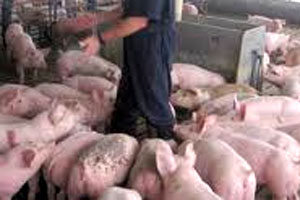The future is happening now

The Farm Specific Diet concept (FSD) is based on the truism that every farm is different. Moreover even on the same farm things can change affecting performance of the growing/finishing pig every 3 months or so.
If the feed manufacturer receives some easily-measured growth rate figures from their customer`s office records every few weeks – no need to go out and weigh things – then a diet more closely attuned to the actual farm circumstances can be made rather than buying off price list, which must always be a compromise to suit the majority.
Results after switching to FSD diets have shown a increase in MTF (saleable Meat from each Tonne of Food fed) averaging 12 kg (range 7 to 19 kg) even after the feed manufacturer`s increased costs passed on to the customer are deducted.
Two questions.
1 .Will the move to FSD mean the end of the feed salesperson?
Eventually, yes. With FSD the feed is not sold on price – as the price, high or low – will always be the right one for the pigs for which it is intended. Price will only occur as a sales advantage if one manufacturer can operate a FSD system just as effectively as the opposition, but more cheaply.
Discussions with three go-ahead feed compounders suggest that as more of their customers switch to FSD, then the expensive sales and marketing force can be gradually reduced, with perhaps a quarter of them re-trained as data collectors. One firm has done some estimates on what this might save them and think it could reduce selling costs by a third.
2. The Future. Will FSD combined with CWF simplify the feed manufacturer’s problems?
Of course. Computerised Wet Feeding, already well-established on pig farms (one manufacture has already installed over 5000 units world-wide) lends itself to the regular alteration of the nutrient balance demanded by the FSD concept, as just by pressing buttons on the farmer’s console the formulation can be changed in seconds. This means that the farmer can make the changes on instruction from the nutritionist’s office and the feed compounder does not have to make the physical changes himself, as the regular alterations to the FSD diets can be made on-farm. I foresee the time when the mill need only manufacture 2 or 3 basal diets which can be adjusted to meet the needs of the latest FSD formulation advised by the mill’s nutritionist. This will save the feed mill large sums of money in reducing manufacturing cost through fewer and longer production runs and less warehousing.







